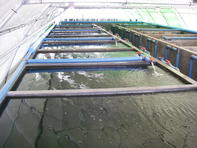There have been several attempts at catfish farming in South Africa in the past, none of which has been successful. Each of these farms focused on the technical side of the business and was successful in breeding and growing the catfish, but they did not manage to sell enough of the product to become economically viable.

A Graaff-Reinet based catfish farm started with the development of value-added products and obtaining buyers for those items and believes the lack-of-a-market trap can be avoided. Due to the skills and capital-intensive nature of aquaculture, it is difficult for communities and individuals lacking either, or both, to enter the fish farming industry successfully.
Thus, it is recommended that aquaculture for upliftment is best suited to be run as a ‘satellite grower program’. The complexity of the catfish hatchery phase makes them well suited to the ‘satellite’ model.
A central hub should do the skills intensive activities such as the hatchery, bulk buying, processing of catfish, sales, training and extension services whereas a number of satellites each purchase the fingerlings from the hub, rear the fish in accordance with the training they received and the extension services advice.
These satellites will then ultimately sell the live market-sized fish back to the hub. In this way, the hub can be privately funded whereas the satellites can be funded, if needed, by government grants or soft-loans, a loan with a low-interest rate.
This system is already in use for other aquaculture species (mussels, koi) but not yet with catfish. Herein lies the opportunity.
By Leslie Ter Morshuizen